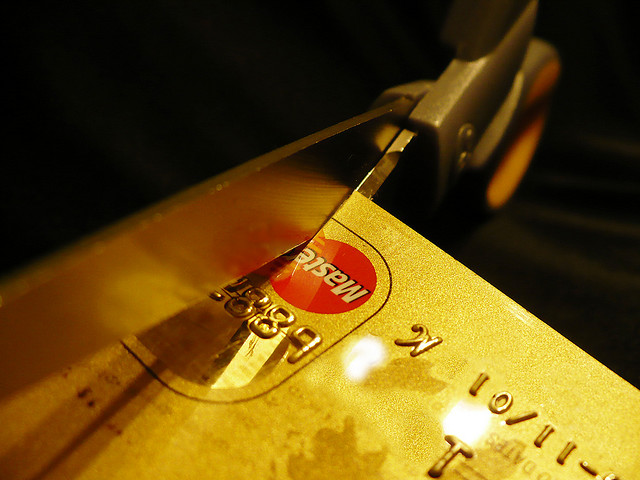(source)
Getting into debt is easy. Getting out of debt is a different story. There’s no fast and painless way to get out of debt, but it is possible to make those monthly payments go away with a good plan.
Much like investing in stocks, debt elimination plans can be aggressive or passive.
Both types of strategies work, but which one is best for you?
Here’s how you can find out. Before putting any plan into action, create a spreadsheet document and list the names of the creditors you deal with regularly. Then, list the amounts owed in one column, minimum monthly payments in another column, and interest percentages in a third column. Whenever you make a payment, deduct this amount accordingly.
Now, let’s review several debt reduction tactics you should consider.
Aggressive Debt Reduction Tactics
1. If you can afford it, add an extra $100 to all monthly payments. This may seem like a lot of money, though this extra amount will make a world of difference.
2. Create a budget and stick to it. The word “budget” is often as popular as the word “diet,” but it’s something that’s necessary if you want to pay off your debt. When it comes to adding an amount to the “monthly spending” section of your budget, allow yourself an extra $30 per month for spending money. Don’t worry, once you get rid of your debt, this number will increase!
3. Say “goodbye” to restaurants – this includes those morning lattes! Even small amounts spent on eating (or drinking) in a bar, coffee shop, or restaurant, can really make a difference. Consider this: if you spend only $5 per day on a coffee, that’s $35 extra per week that could be padding your pockets — or $1,825 per year.
4. Downsize. If you are spending a lot on your rent, consider moving to a less expensive place. If you own, review your mortgage refinance options. Saving $100+ a month will allow you to put those extra funds toward your debts.
5. Work extra hours. Spend that extra money on your debts, not on new things.
Passive Debt Reduction Tactics
1. If you carry high-APR credit card balances, consider transferring them to a 0% introductory APR card. If you get these offers in the mail, start filling out applications – but only after you’ve reviewed the costs involved. Almost all of these offers these days charge a 5% fee of the balance transferred. Transferring your debt could save you a lot of money, but make sure the savings are larger than the balance transfer fees.
2. Focus on the credit card with the highest interest. Put extra money toward this debt amount. When you’ve paid off this card, go to the next, and so on – a strategy known as debt avalanche.
3. Use cash for every transaction. It’s easy to buy items with a credit card. This is especially true if you have managed to create a bit of space on one card. Resist the urge by using the spending money that you’ve set aside for purchasing items. Once this money has run out, do not spend any more.
4. Recycle old clothes. Everyone has them – those clothes in the back of your closet that you never wear. Pull them out and you may discover items that you didn’t even know you had. (Added bonus: Sell whatever you’re sure you won’t need — use the cash towards your debts.)
5. Don’t borrow any more money — unless you find a low-cost loan that will allow you to consolidate your current debts to pay them off faster and save money on interest.
Your Plan
Whether you choose to go the aggressive or passive route is up to you. An aggressive budget reduction route will help you reach your goals faster, but some people find it hard to stick to — or even afford.
The most important thing to remember is to avoid using credit cards, borrowing extra money, or missing payments. Debt reduction is a long and rocky road, but there is a smooth path in the distance!




















